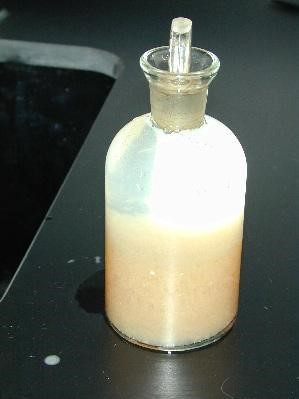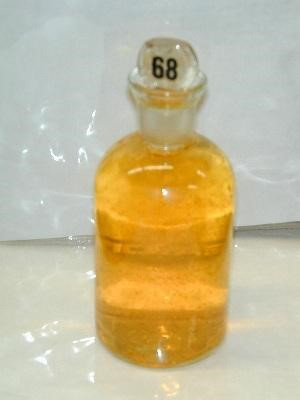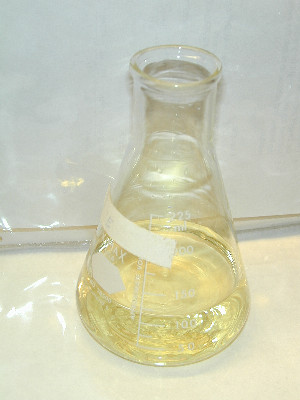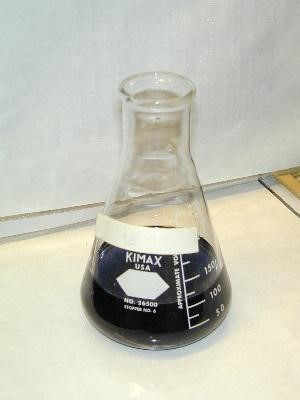水中の酸素を溶存
概要
マーガレット職人とキンバリー ・ フライ - デュポール大学のソース: 研究所
溶存酸素測定は分解種における生物地球化学材料のリサイクルに不可欠なだけでなく、(例えばブルーギルおよび低音)、人間の消費のために好ましい魚種を含む河川の生態系のすべての酸素呼吸生命にとって重要である表面の水に溶解した酸素のガスの量を計算 (を行う)。
海、川、湖での溶存酸素は、生物やそこに住む生き物にとって重要です。溶存酸素量を下回る水域の正常なレベルと、水質を傷つけ、生き物死ぬことを始めます。富栄養化と呼ばれるプロセスで水の体が低酸素になることが、生物は、本質的に「死んだ地帯」になることをサポートすることができなくなります
富栄養化は、余分な栄養素が藻類藻類ブルームの急速に成長する人口を引き起こす場合に発生します。藻類ブルームが水の酸素の 2 つの重要な入力を遮断する水の表面で密なマットを形作る: ガス雰囲気とマット下に光の不足のため水に光合成から交換。溶存酸素としてレベルを下回る表面、酸素呼吸生物ダイオフ大量、有機物の増加を作成します。さらに残りの溶存酸素を使い果たしてしまい底生のゾーンで酸素呼吸分解人口の増加レベルの代謝分解活性の間に余分な有機物原因。酸素レベルになるとこの低、携帯酸素呼吸種 (魚類など) は水に好気性の生命を残さず、デッド ゾーンを作成先に移動します。
ウィンクラー-アジ化滴定法では、滴定を使用して未知の試料中の濃度を決定するします。具体的には、チオ硫酸ナトリウムは、化学量論的サンプルにおける溶存酸素の量に関連することができるヨウ素を滴定する使用されます。
手順
1. サンプル溶存酸素測定
- 水コレクションのサイトでサンプル水満ちているクリア 300 mL BOD ボトルにマンガン硫酸を 2 mL 加える校正ピペットを使用します。サンプル表面の下でピペット チップを挿入し、慎重にマンガン硫酸を塗布サンプルに酸素を導入することに注意してください。これはサンプルが「固定」し、溶存酸素濃度変更を防ぐことができますまで泡の作成を避けます。
- 同じ手法を使用して、2 mL アジ化物ヨウ化アルカリ試薬を追加します。
- すぐにボトルに閉じ込められている空気の泡がないので若干かつ迅速を押す場所でストッパー ボトルを傾け、ストッパーを挿入します。
- 慎重に数回 (空気泡を作成) せず反転をミックスします。Floccule (フロック) が曇った出現 (図 1) 材料の沈殿凝集から形成されます。
- ソリューションのフロックが定着しているまで待機します。もう一度、数回ボトルを反転し、フロックが定着しているまで待ちます。サンプルは溶存酸素量の変化を防ぐために固定は今、ラボに戻って運ばし、涼しく
結果
申請書と概要
タグ
スキップ先...
このコレクションのビデオ:

Now Playing
水中の酸素を溶存
Environmental Science
55.9K 閲覧数

樹木: 二分のキーを使用するには、方法
Environmental Science
81.3K 閲覧数

点を中心とした樹木の調査: 四半期サンプリング
Environmental Science
49.5K 閲覧数

GIS を用いた都市林業を調査
Environmental Science
12.7K 閲覧数

プロトン交換膜燃料電池
Environmental Science
22.2K 閲覧数

バイオ燃料: セルロースからのエタノールの生産
Environmental Science
53.4K 閲覧数

組み換え食品の遺伝子検査
Environmental Science
89.9K 閲覧数

濁度と地表水の全固形物
Environmental Science
35.9K 閲覧数

水生生物の生態系の栄養素
Environmental Science
39.0K 閲覧数

対流圏オゾンを測定
Environmental Science
26.5K 閲覧数

紫外可視分光法を用いた自動車の排気ガスのないxの定量
Environmental Science
30.2K 閲覧数

原子吸光分光法による土壌の鉛の分析
Environmental Science
125.8K 閲覧数

炭素・窒素環境試料の分析
Environmental Science
29.5K 閲覧数

土壌養分分析: 窒素、リンおよびカリウム
Environmental Science
216.2K 閲覧数

土壌にミミズ個体数の解析
Environmental Science
16.5K 閲覧数
Copyright © 2023 MyJoVE Corporation. All rights reserved



